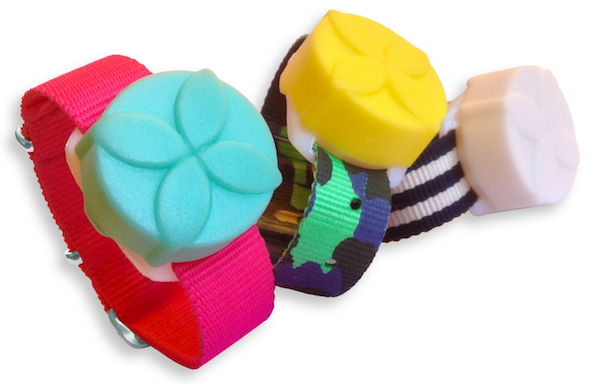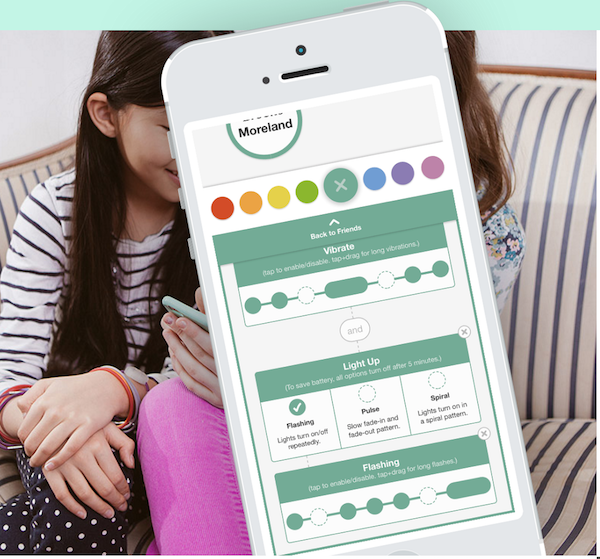Sara Chipps on Teaching Girls to Code with Wearables
Time to read:
This post is part of Twilio’s archive and may contain outdated information. We’re always building something new, so be sure to check out our latest posts for the most up-to-date insights.

Sara Chipps has spent the better part of a decade teaching women to code. Her latest startup, JewelBots, makes programmable friendship bracelets for young girls get get them excited about engineering before their social circles tell them its uncool. She down with us on Twilio Radio to talk about user testing with middle school girls, why the hardware hacking world seems to be more diverse than the programming world, and how men can appropriately get involved with helping women and girls learn to code.
Below is a partial transcript of our conversation with Sara. It’s been edited for the sake of narrative, which is to say that she said all these things but not necessary in this order. You can listen to the podcast for the full interview.
Sara’s one of the 100 speakers speaking at SIGNAL, our developer conference for communications. If you’d like to meet Sara in person and learn more about what she’s been working on, you can use the promocode RADIO when registering for 20% off your ticket.
Here’s Sara interview:
The importance of reaching young girls
A lot of studies have shown that the pre-teen age range is when girls start losing interest in math and science. And it’s interesting, because when we go talk to girls, we notice this shift in personality as well where all of a sudden it’s not so cool to talk to us. All of a sudden they’re very quiet in class rather than being rambunctious and loud like what we’re used to seeing in the younger group. When we go to some of the older classes we notice that they no longer speak up so much and they kind of play it cool. I think it has a lot to do with the way we socialize them, but no one knows how to fix it. JewelBots is an attempt to do that.
When you look at the toys that are more feminine, they’re consumables. They’re things you consume and you use, but they’re not activating or Tinker Toys. They’re not stuff you build and make better like the more masculine toys we build. Jewelbots is an effort to build exactly that by talking to girls and finding out what’s important to them, and then by building something that they love that they can make even better by building.

JewelBots react to your friends when they’re nearby. You match your friends and can send each other secret messages. We have an app that allows it to pair with a phone too. Because it has the Bluetooth, it can tell you if you have a new Instagram follower or if it’s going to rain. It’s like an Apple Watch for kids. But for things that don’t involve the Internet, you don’t need the phone. They use a mesh network, so you can communicate across the room.

Teaching Kids to Code
The real neat part is you can code them using the Arduino IDE. You don’t need to code them in order to get started. We thought it was good to have an out of the box experience that would get you started right away.
One thing that has been a really big inspiration for us is Minecraft. Minecraft is huge with the kids, and I don’t know why, because it looks so boring. But it’s really huge. There’s all these eight year olds out there that are tiny eight year-old server admins. All these kids are teaching themselves Java — and Java’s awful. Who wants to learn Java?
But they build mods for Minecraft in Java, which is so cool to see. That’s what we’ve patterned a lot of our stuff after. Minecraft is so fun out of the box, you don’t have to learn to code to do it, but all these kids, they fall in love with it, and they start coding.
In the Arduino IDE you do write in C, and there’s been a lot of internal and external discussion with our partners about whether we should do a visual programming language when we ship Jewelbots. My gut says that girls will figure it out. But if they don’t, then we’ll do a visual programming language. We’ll see.
User Testing Changed Everything
We have a lot of teacher friends that will let us meet with their kids. What we do is usually teach lessons about electronics and then to do some user testing and talk to them about what’s exciting for them. It’s like a trade-off where they get a free class, and we get some free user testing. We’ve talked to a few hundred kids at this point about what they like and what they’re into.
We were “JewlieBots”, but they said that sounded really young, so we became “JewelBots.” The whole functionality changed when we started doing user testing. Initially it was going to be a bracelet that changed color based on your outfit, so you could wake up in the morning, “Oh, I’m wearing blue today and I want to make my bracelet glow blue,” which I thought was a great idea. But when we met with the kids they were like, “Well, that’s stupid. I would never do that.” I was like, “Oh. Sorry. I’m irrelevant.”
That came out of just talking to them about what is important to them. Over and over again it was just friendship, “my friends”, “communicating with my friends”, “being with my friends”, “being near my friends.” At that age it’s so important to them, so it was kind of obvious what was the best functionality to build into the Jewelbot.
Why Hardware?
I started tinkering with hardware after seeing Emily Rose, who I’m so lucky to work with now, give a talk in Dublin about NodeBots, which are robots powered by JavaScript. I started playing with it, and one thing I observed is it’s much more diverse at hardware events. I think there’s something about having something physical to play with. Programming itself is kind of lame. You’re like, “Oh, this is a variable. Great. What does that do? Why do I need to know that?” When you have something in your hands and you can see it move, it’s a whole different experience.
One organization I am obsessed with is First Robotics. First Robotics is all over the US, and it is so cool. I’m lucky enough to judge the First Robotics Championship here in New York once a year. It’s an entire weekend, which you’re like, “Oh, I have to volunteer away this entire weekend?” But it’s so much fun, I can’t even tell you. These kids are just all on fire, and it’s so diverse. I don’t know if that’s unique to New York. I’d like to think it isn’t, but I’ve never been at a technology event that is so diverse.
They compete using Lego Mindstorms. They all get their challenge in the beginning of the year. It might be, “Okay, make a robot that can help an elderly person open their prescription bottle.” One of the challenges was if your robot can get these pool noodles in this area, then you get ten points for every pool noodle. You have to figure out, “What’s the best way to grab a pool noodle?”” They design these robots around 3D printing, CNC machines, all these different mechanics. It’s so neat to watch.
They announce the challenge in the beginning of the year every year. This year the founder Dean Kamen comes on and he’s dressed as a knight, and all these people are dressed as knights, and they’re in the woods, and they’re like, “This year it’s tower defense”.
There’s a lot of pomp and circumstance around First Robotics, which is really one thing I appreciate about it. One thing the kids all get judged on is team spirit, teamwork, which leads to really fun crowds of all these people in face paint, so stoked for their team of robotics champions.
It’s so neat to see these kids compete and get so excited over technology. We actually had a First Robotics team come by Jewelbots yesterday, which was awesome. This girl reached out — she has a First Robotics team — and was like, “Do you mind if we come by your office?” I was like, “Sure. Great.”
I didn’t know what I expected. I expected two or three of them, and like ten girls showed up. Ten high school girls just came by the office. We got to hang out and talk about how they designed their robot, what their strategy is. I got to show them all these different early prototypes and how we iterated on all these different charms, and how we made the decisions that we did. I got to get their opinions on, “What color bands do you like? What color charms do you like? What do you think people will like?” Stuff like that’s really fun.
State of JewelBots
Yesterday we sent out our RFQ, which basically means all of our design is finalized, and we are getting estimates from different contract manufacturers. The next step is going to manufacturing, which is really exciting. The spring is our goal. It seems like we’re still on track for that.
We ran a Kickstarter last August. It went really well. We hit our goal on day one and ended up doing five times our goal. We’re pre-selling them on the site right now. One is $69, two for $89, and three for $119. We’re also selling a wearables kit, which is shipping now. It has an Arduino Gemma and a bunch of LEDs that you can sew in clothes, which is pretty neat. Right now they’re free if you buy a three-pack of JewelBots.
If you’d like to meet Sara, are into hardware hacking, or just want to learn more about the future of communications, you’d probably enjoy SIGNAL. Use the promocode RADIO for 20% when purchasing your ticket.
Related Posts
Related Resources
Twilio Docs
From APIs to SDKs to sample apps
API reference documentation, SDKs, helper libraries, quickstarts, and tutorials for your language and platform.
Resource Center
The latest ebooks, industry reports, and webinars
Learn from customer engagement experts to improve your own communication.
Ahoy
Twilio's developer community hub
Best practices, code samples, and inspiration to build communications and digital engagement experiences.


